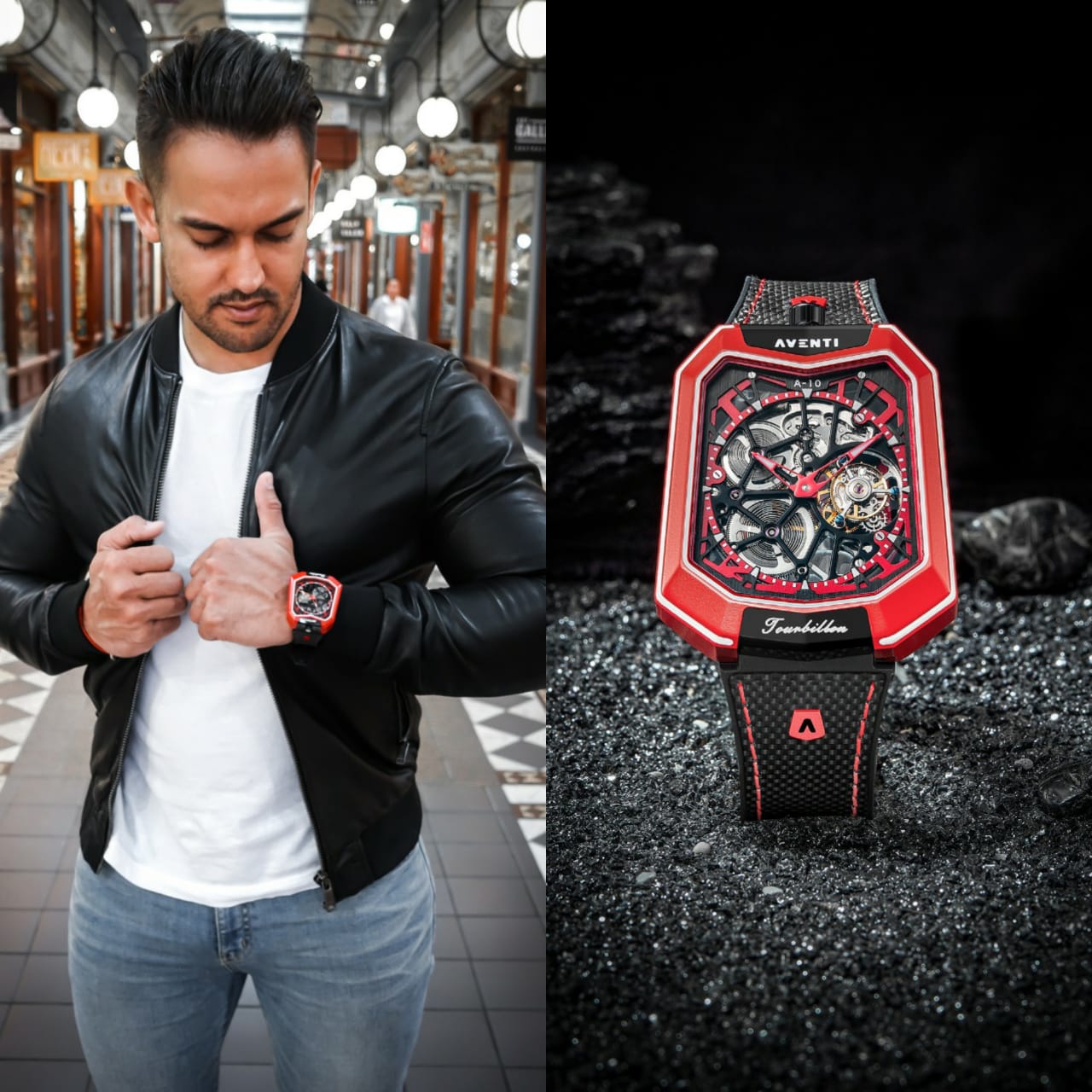Lifestyle
The History of Watchmaking You Never Knew

History, as the old adage goes, is written by the winners. Such is the case with the tourbillon watch.
All throughout the watch world, John Breguet is revered as the “father of the tourbillon movement”. Receiving the first patent for his tourbillon design in 1801, Breguet was already a well-respected horologist among the aristocracy. Although a bit of a showoff, Breguet himself revealed the true inventor of this gravity-defying movement: John Arnold. While it may sound like the beginning of a story of corporate espionage and underhanded deals, much like the history Silicon Valley presents, nothing is further from the truth.
The esteemed pair were actually very good friends. Introduced by one of Breguet’s first clients, the Duke of Orleans. Throughout the years, they traded craft secrets, offered help to one another with new designs, even sending their sons to apprentice under the other.
Pocket watches were the mobile timekeepers of that era. Due to the relatively stationary position of the pocket watch, watchmakers struggled with how to answer the uneven wear pocket watches that affected the accuracy of their devices. A problem presented by a force that no artisan at the time could escape, gravity.
It was John Arnold that discovered the solution: to create a device that would release the escapement, allowing an additional rotation that would correct the drag of gravity on the delicate moving parts. This design gave birth to the first ever tourbillon movement.
The death of John Arnold, in 1799, was a terrible loss to Breguet. As a final labor of love to honor his colleague and friend, Breguet modified one of Arnold’s earlier creations with the first real tourbillon built. The modification was completed and presented to Arnold’s son in 1808 with the heartfelt inscription, “Breguet’s first tourbillon regulator, united with one of Arnold’s earliest movements; a tribute by Breguet to the revered memory of Arnold and presented to his son in the year 1808.”
At Aventi, we don’t just make watches, we’re watch enthusiasts. Much like our predecessors, we constantly challenge ourselves to design and create something truly unique that overcomes a weakness in the industry.
We’ve taken on the big names and challenged the idea that tourbillon watches are meant for only the social elite. We’ve created a new design and system that answers the inefficiencies that plague horology today, reducing the production costs to mere fractions of what is commonly accepted, allowing us the opportunity to offer the first ever tourbillon for under a $1000.
Curious about what other innovations Aventi has up their sleeves? Go to www.aventiwatch.com to learn more about our revolutionary crowdfunding campaign that is challenging everything we know about watchmaking.
Lifestyle
The Power of Integration: Fred A. Kressaty’s Inner Harmony Redefines Emotional and Spiritual Growth

In today’s world, personal growth often feels fragmented. Self-help trends lean heavily toward emotional intelligence (EQ) or spirituality but rarely explore how these powerful forces can work together.
Fred A. Kressaty’s book, Inner Harmony: Mastering Emotional & Spiritual Intelligence, bridges this gap, presenting a revolutionary approach to achieving balance and purpose.
By merging emotional and spiritual development, Fred provides readers with a comprehensive framework for managing life’s challenges with resilience and authenticity.
This innovative perspective has made Inner Harmony a standout in the crowded self-help genre, earning it a place on the shelves of readers seeking practical and profound guidance for living a fulfilled life.
The Missing Link Between Emotional and Spiritual Intelligence
While emotional intelligence emphasizes understanding and managing one’s emotions, spiritual intelligence leads to finding more profound meaning and purpose. These two intelligences are often treated as separate paths, but Fred argues they are deeply intertwined.
In Inner Harmony, he reveals how integrating EQ and SQ leads to holistic well-being, clarity, inner peace, and stronger relationships.
Fred explains that EQ helps us journey through the external world—our relationships, professional lives, and personal goals—while SQ connects us to the internal world of values, beliefs, and purpose.
By blending these intelligences, we can achieve a state of “inner harmony” that aligns our actions with our more profound truths.
The Practical Framework of Inner Harmony
One of the book’s key strengths is its practicality. Fred doesn’t just discuss theories; he offers readers a step-by-step guide to applying EQ and SQ principles in everyday life.
The book introduces readers to tools like mindfulness practices, emotional regulation techniques, and values-based decision-making. These methods help individuals build resilience, strengthen relationships, and lead more intentional lives.
The chapter on resilience is particularly impactful. It shows how emotional intelligence can help individuals bounce back from setbacks, while spiritual intelligence offers the perspective needed to find meaning in challenges.
Fred’s approach empowers readers to see adversity not as a roadblock but as an opportunity for growth.
Empathy and Connection: The Heart of Inner Harmony
Empathy is one of the book’s central themes, and Fred explores it through the lens of both EQ and SQ. Emotional intelligence enables us to understand others’ feelings, while spiritual intelligence helps us approach those feelings with compassion and a sense of interconnectedness. A dual perspective that transforms how we interact with others, fostering more profound, more meaningful connections.
Fred’s insights into authentic communication are especially relevant in today’s polarized world. By combining emotional awareness with spiritual values like patience and forgiveness, readers can approach difficult conversations with empathy and understanding, creating bridges instead of barriers.
Leadership Through EQ and SQ
Fred devotes much of the book to exploring how EQ and SQ can transform leadership. He argues that great leaders are not just emotionally intelligent—they are also spiritually grounded.
The book includes practical advice for integrating EQ and SQ into leadership practices, from using self-awareness to navigate tough decisions to employing empathy to connect with team members. Fred’s insights are backed by real-world examples, making the concepts easy to understand and apply.
The Role of Mindfulness in Integrating EQ and SQ
Mindfulness emerges as a key tool in Inner Harmony, as the bridge connecting emotional and spiritual intelligence. Fred introduces readers to mindfulness practices that enhance self-awareness, emotional regulation, and spiritual clarity.
By staying present and grounded, individuals can navigate their emotions more effectively and make decisions aligned with their values.
The book offers simple yet impactful exercises, such as mindful breathing and reflective journaling, that readers can incorporate into their daily routines. These practices help cultivate a sense of balance and perspective, even in the face of life’s challenges.
Why Inner Harmony Matters Today
Inner Harmony is a timely guide to achieving balance in an era marked by burnout, anxiety, and disconnection. Fred’s integrated approach addresses the root causes of these issues, offering readers the tools to lead more intentional and meaningful lives.
His focus on both emotional and spiritual growth ensures that the book resonates with a broad audience, from professionals seeking workplace balance to individuals looking to deepen their relationships.
The book’s emphasis on aligning actions with values is particularly impactful. In a culture that often prioritizes productivity over purpose, Inner Harmony encourages readers to pause, reflect, and reconnect with what truly matters.
The Vision Behind the Book
Fred A. Kressaty’s motivation for writing Inner Harmony stems from his journey of transformation. After a near-death experience in 2000, he underwent a profound spiritual awakening that reshaped his understanding of life’s challenges.
This moment inspired him to study the Bible, explore emotional intelligence, and ultimately develop a framework that integrates these insights.
For Fred, the book is more than a guide—it’s a mission. He hopes to empower readers to discover the tools within themselves to live with purpose, authenticity, and connection.
His approachable tone and relatable anecdotes make the book both inspiring and accessible, ensuring its message reaches those who need it most.
A Legacy of Balance and Purpose
As Fred A. Kressaty continues his work as a coach and counselor, Inner Harmony is the culmination of his life’s dedication to helping others. The book is not only a reflection of his professional expertise but also a testament to his belief in the transformative power of resilience, self-awareness, and faith.
Whether going through a personal crisis, seeking greater clarity in your relationships, or looking to lead purposefully, Inner Harmony: Mastering Emotional & Spiritual Intelligence offers a roadmap to a more balanced and fulfilling life.
Fred’s story and book remind us that balance is not about perfection but about alignment. Connecting our emotional and spiritual selves creates a foundation for resilience, connection, and lasting fulfilment.
To Purchase The Book, Visit:
-

 Tech5 years ago
Tech5 years agoEffuel Reviews (2021) – Effuel ECO OBD2 Saves Fuel, and Reduce Gas Cost? Effuel Customer Reviews
-

 Tech6 years ago
Tech6 years agoBosch Power Tools India Launches ‘Cordless Matlab Bosch’ Campaign to Demonstrate the Power of Cordless
-

 Lifestyle6 years ago
Lifestyle6 years agoCatholic Cases App brings Church’s Moral Teachings to Androids and iPhones
-

 Lifestyle5 years ago
Lifestyle5 years agoEast Side Hype x Billionaire Boys Club. Hottest New Streetwear Releases in Utah.
-

 Tech7 years ago
Tech7 years agoCloud Buyers & Investors to Profit in the Future
-

 Lifestyle5 years ago
Lifestyle5 years agoThe Midas of Cosmetic Dermatology: Dr. Simon Ourian
-

 Health7 years ago
Health7 years agoCBDistillery Review: Is it a scam?
-

 Entertainment6 years ago
Entertainment6 years agoAvengers Endgame now Available on 123Movies for Download & Streaming for Free
